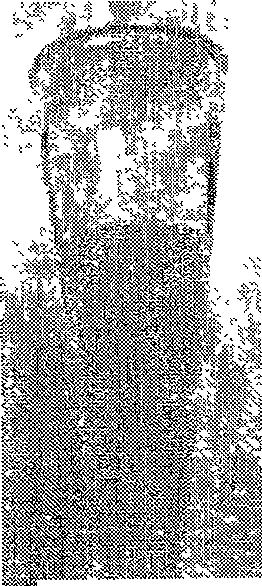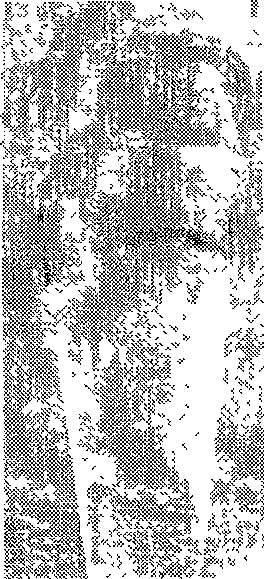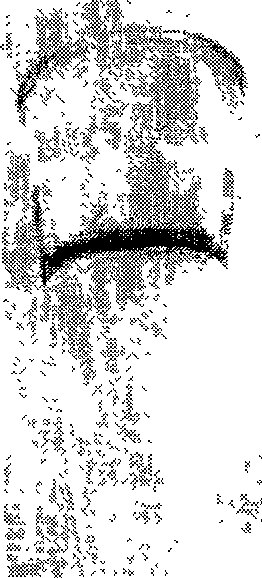Production of polyaniline micro/nanometer fibre
A nanofiber, polyaniline technology, applied in the field of materials, can solve problems such as limiting large-scale applications, and achieve the effects of standardization of preparation and improvement of yield
- Summary
- Abstract
- Description
- Claims
- Application Information
AI Technical Summary
Problems solved by technology
Method used
Image
Examples
Embodiment 1
[0022] attached Figure 7 Shown is a homemade nano (diameter) scale polyaniline fiber material.
[0023] The experiment of synthesizing nano-PAni fibers by oil / water two-phase interfacial polymerization is carried out in an immiscible two-phase system. Aniline purified by secondary distillation is dissolved in the organic phase, and the solvent used is CHCl 3 ; while the oxidizing agent (ammonium persulfate APS) and organic benzenesulfonic acid dopant (such as p-toluenesulfonic acid TSA, camphorsulfonic acid CSA, dodecylbenzenesulfonic acid DBSA, etc.) are dissolved in the water phase. Taking p-toluenesulfonic acid as an example, the synthesis conditions are as follows: add 100ml of CHCl containing 0.4mol / L aniline monomer to a 250ml separating funnel 3 100ml of 1mol / L p-toluenesulfonic acid aqueous solution containing 0.2mol / L oxidant APS was carefully added to the above organic phase ([APS] / [An]=1:2). Reaction at room temperature for 16h. Separate the orange-red organic m...
Embodiment 2
[0025] attached Figure 8-9 Shown is the morphology of the doped PAni-TSA product synthesized by the oil / water interface polymerization method.
[0026] In a 250ml separatory funnel (note: use a separatory funnel instead of a beaker in the literature as a reactor, which is more conducive to the separation and collection of products), add 100ml of CHCl containing 0.04mol of aniline monomer 3 , and then carefully add 100ml of 1mol / L TSA solution containing 9.2g oxidant APS to the above organic phase ([APS]:[An]=1:1), the upper layer is the water phase, and the lower layer is the oil phase. Reaction at room temperature for 16h. Separate the orange-red organic matter in the lower layer, wash the dark-green dispersion in the upper aqueous phase with a certain amount of distilled water and ethanol respectively, and dry it at 60°C to obtain a dark-green powder product, which is abbreviated as PAni-TSA, and placed in a vacuum Save the atmosphere. The PAni-TSA in the doped state was...
Embodiment 3
[0028] In a 250ml separatory funnel, add 100ml of CHCl containing 0.04mol aniline monomer 3 , and then carefully add 100ml of 1.5mol / L TSA solution containing 4.6g oxidant APS to the above organic phase ([APS] / [An]=1:2), the upper layer is the water phase, and the lower layer is the oil phase. Reaction at room temperature for 16h. Separate the orange-red organic matter in the lower layer, wash the dark-green dispersion in the upper aqueous phase with a certain amount of distilled water and ethanol respectively, and dry it at 60°C to obtain a dark-green powder product, which is abbreviated as PAni-TSA, and placed in a vacuum Save the atmosphere. Doped PAni-TSA was treated with 10% ammonia solution for 12 hours, filtered and washed until neutral, and dried in an oven at 60°C to obtain intrinsic PAni, which was weighed and the yield was 30%. .
PUM
| Property | Measurement | Unit |
|---|---|---|
| diameter | aaaaa | aaaaa |
| degree of polymerization | aaaaa | aaaaa |
Abstract
Description
Claims
Application Information
 Login to View More
Login to View More - R&D
- Intellectual Property
- Life Sciences
- Materials
- Tech Scout
- Unparalleled Data Quality
- Higher Quality Content
- 60% Fewer Hallucinations
Browse by: Latest US Patents, China's latest patents, Technical Efficacy Thesaurus, Application Domain, Technology Topic, Popular Technical Reports.
© 2025 PatSnap. All rights reserved.Legal|Privacy policy|Modern Slavery Act Transparency Statement|Sitemap|About US| Contact US: help@patsnap.com



